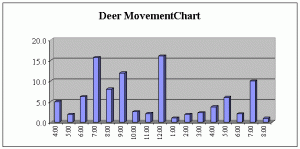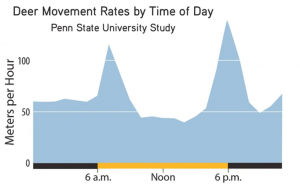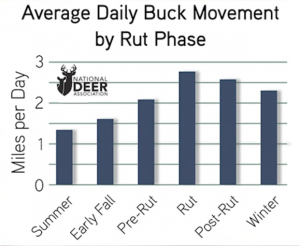The rut occurs at various times, but generally in West Tennessee is around mid-November to late November. The best time to hunt is probably around this time to a little earlier. This is because deer tend to move a little more immediately before the peak breeding times. Most comments I have seen on when to hunt in West Tennessee is from 11/15 to 12/07. If the doe does not get bred or become pregnant during the normal rut, then she may come back into estrus in 23-30 days. This results in the 2nd rut.
The best time of day to hunt depends on from whom you get your information. Longtime hunters and friends Phil Bell and Jim Dennison claim that the morning from daylight until 10:00 a.m. or so is the best time. However, as we all get older those afternoon hunts are more enticing. But field-dressing a deer and hauling it to a processor is a lot more fun in the morning, than after dark, so there is that to consider.
Per an article by Rob Somerville with the Conservation Buck Society – more trophy bucks are harvested between the hours of 11:00 AM and 1:00 PM than at any other time period. The reason is two-fold. For one, the bucks are not opposed to traveling in complete daylight at the chance that their trolling might catch them a doe. The second reason is that they didn’t get to live 3 1/2 to 5 1/2 years by being completely stupid. These mature bucks have patterned hunters throughout their lives. They know that most hunters hunt from daylight to about 9:00 a.m. and in the afternoon from around 3:00 p.m. to dark. So they hit the trails mid-day in search of a hot doe.
See the charts below. Maybe there is some validity to Rob’s claims. Looks like 11:30 to 1:00 pm could be a good time to be in your stand.
Deer Movement Chart as reported in Deer & Deer Hunting Magazine.
The chart is from a 5 year study based on 33,000 hours and 10,000 deer sightings.
Moon phases and hunting: I was always of the belief that nights there was a full moon deer would move more at night and less during the day. So the better days to hunt were farther from a full moon. But a 2014 study by North Carolina State University shows that full moons caused a spike in midday deer movement. The new moon caused movement peaks near dawn, and non-quarter moon phases caused an escalation in mid-morning movement.? To see the moon phase for any day go here.
Speaking of times to hunt – here is a great website that gives sunrise, sunset, moon phases, civil twilight, etc. (Civil twilight is the earliest/latest that there is enough light for you to see well enough to shoot.) Click here for the website


